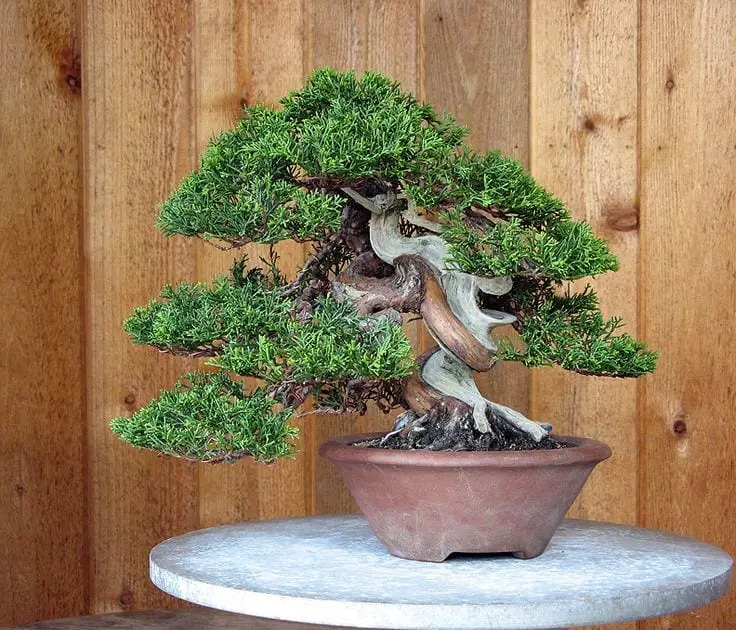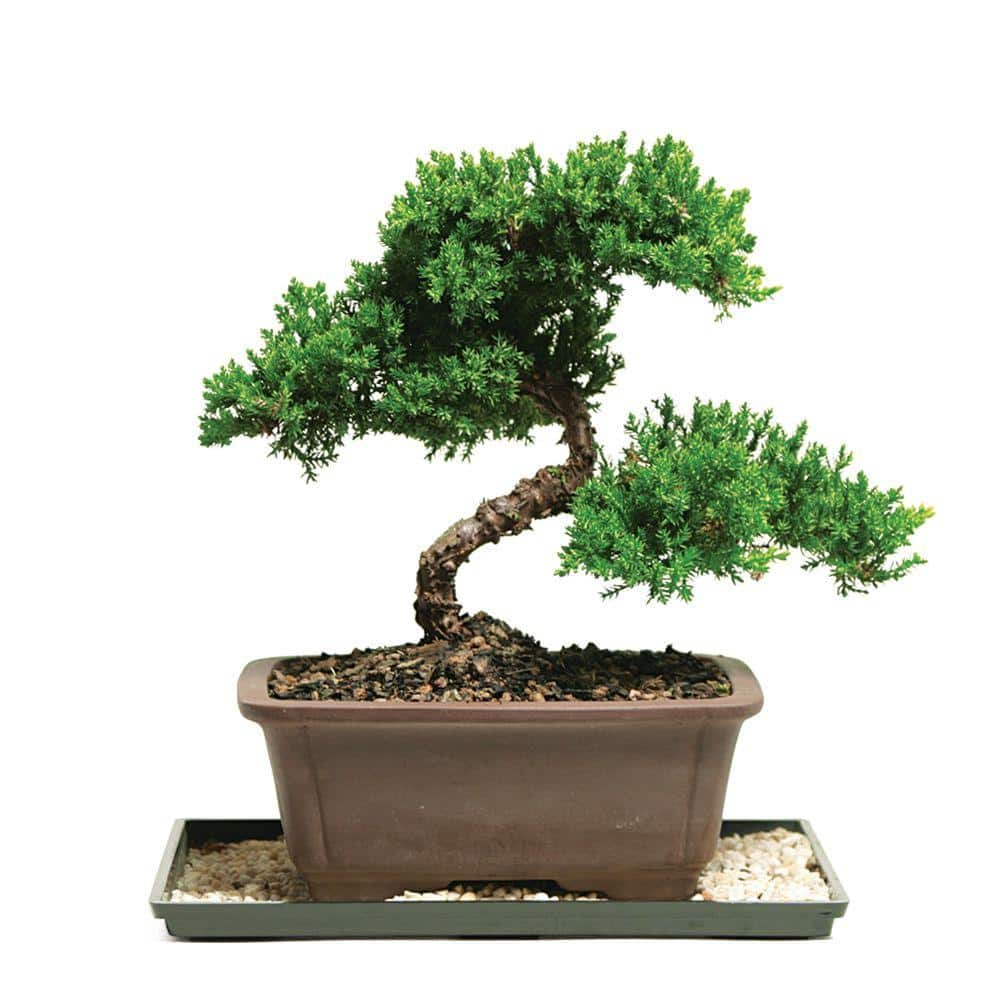

During the quarantine period, we are inspected monthly by the German Plant Protection Agency. The bonsai must be quarantined for at least 3 months (usually until the beginning of July) to prevent the introduction of plant diseases and pests. Most Juniper bonsai arrive at the end of February, but unfortunately can not be sold immediately. The selected Juniper bonsai are then transported in January of the following year in a refrigerated container to Germany.

The Junipers are selected by hand in the autumn in Japanese export nursery. We import most Juniper bonsai directly from Japan. To unwire the bonsai, you should use a wire cutter to cut the bonsai wire into small pieces and then remove it. The bonsai wire does not grow in too quickly and usually has to stay on the tree for 1-2 years, otherwise the branches will bend back to their original position after being shaped. Juniper bonsai tree is a very special type of bonsai tree.people should take care these type of life saviour trees in a proper way so that the life span of these trees are up to the mark. Wiring: Juniper bonsai can be wired all year round. Kiryu is particularly suitable as bonsai soil. For this reason, as few roots as possible should be cut off. Beautifully sculpted and nurtured with care, our unique Juniper bonsai is more than just a treeit’s an inspired work of art One of the most popular of all bonsai varieties, this exceptional evergreen provides a sense of calm and serenity, and with proper attention it can last for years. Many Junipers (especially the Common juniper - Juniperus communis) react sensitively if they are repotted at the wrong time or too drastically. Repotting: You should be very careful when repotting. Therefore, finished bonsai should be pinched. They tolerate drastic pruning well, but then sometimes form prickly leaves. Pruning: Junipers can be cut with a bonsai scissors. Overwintering: Juniper trees are extremely hardy outdoor bonsai trees and can even be hibernated outdoors under certain conditions (partially shaded, protected from wind). In midsummer they can withstand intermittent dryness in a sunny location. Irrigation: Juniper bonsai grow best with even watering. This is why finished bonsai trees should not be fertilized too rich with nitrogen. With high nitrogen levels, some Junipers form prickly leaves. Suitable for this: Biogold, Hanagokoro or Bonsai liquid fertilizer. I recommend that one uses a quality potting compost mixed with pebbles and sand for optimal drainage.Fertilisation: Juniperus bonsai are supplied with organic bonsai fertilizers during the growing season. Usually done during spring, repotting is the perfect time to check on the overall root health (bacteria presence), trimming them to get rid of some of the old and rotten roots. Most of the juniper bonsai trees require repotting anywhere between every year and every two years. The frequency at which repotting is done depends on the container size of the juniper bonsai. At times, adjusting the position of the plant may be needed to have it obtain adequate sunlight and temperature. While indoors, always have your juniper bonsai in an area where it can receive adequate temperature and sunlight, especially by the window. Many bonsai trees prefer outdoor weather, since they can obtain at least six hours of sunlight and a warm temperature. When we talk about proper placement, this means positioning your bonsai to receive adequate sunlight and temperature. Depending on the season, the plant may need anywhere between a day to a week before watering again. If the soil feels dry, you should water the plant, ensuring you don’t leave the soil waterlogged. I recommend that you test the moisture conditions by poking a finger in the soil daily. The major rule here is to neither overwater nor underwater the plant. Watering your juniper bonsai is the most critical technique to master for the excellent health of the plant. They include making corrections related to the mistakes listed above, as well as repotting. There are three basic ways to revive your juniper bonsai from browning.

#JUNIPER BONSAI HOW TO#
How to Revive Juniper Bonsai from Browning There is still hope for the browning juniper to become a healthier green juniper bonsai. Many of these species of Junipers do very well for bonsai due a variety of factors including foliage sizes and shape, drought tolerance, trunk resiliency, and root strength.

Now you know what probably made or might make your juniper bonsai leaves turn brown. There are over 50 different types of species of Junipers or Juniperus. For optimal lighting conditions for your juniper bonsai, I recommend considering both the local climate and season of the year. With the juniper being a tropical tree, it needs lots of exposure to light.


 0 kommentar(er)
0 kommentar(er)
